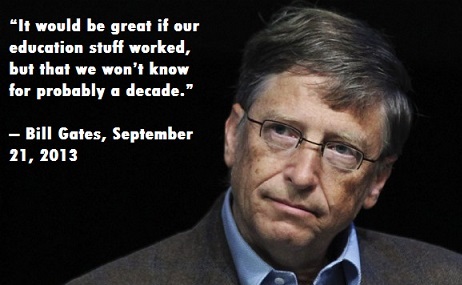As More Schools Look to Personalized Learning, Teaching May Be About to Change
Only a couple of years ago, classes at East Pennsboro Area Middle School in Enola, Pa., had between 25 and 35 students, all sitting behind rows of desks dutifully facing forward. Then, chances were high that their classroom instruction was focused upon lectures, plus a few hands-on activities. Lessons were usually developed around books and worksheets.
For Rachael Moola, Dana Schreiber and Lisa Brown, teaching began to feel redundant. They were doing the same thing six times a day. The routine became more entrenched as their class sizes grew and access to potentially transformative technology became more elusive.
“Teachers were all feeling a little frustrated. We were craving a change,” Moola recalls. “Our school just wasn’t structured to provide the kind of higher-order thinking our students needed.”
Today, instead of simply memorizing facts for a test, students dive deeper into subjects that interest them. Textbooks and worksheets no longer dominate, as educators employ multiple instructional models. Smaller class sizes allow for more time for one-on-one instruction.
Best of all, the lifeless classroom setups are gone, and learning spaces have been reconfigured with moveable furniture and walls so that when classroom subjects overlap, teachers can combine lessons. Students rotate through these areas, which fosters a more collaborative learning space.
“They can’t hide in the classrooms anymore. Every kid is involved in every lesson, answering every question,” Moola says.
“As more people read about it, personalized learning has become more popular, but as a term, it’s become more and more melted down and confusing” – Elliot Soloway, professor of computer science, University of Michigan.
These are just some of the highlights of the school’s new blended learning/personalized learning model. And East Pennsboro teachers took a leadership role in design and implementation. Although the plan is still being rolled out, math teacher Lisa Brown says the impact on students and staff has been “rejuvenating.”
Roughly 600 miles southwest of Enola, in Louisville, Ky., personalized learning has also materialized in Paul Barnwell’s Language Arts class at Fern Creek High School. For two years, Barnwell and his colleagues have shared their classrooms with ReadingPlus, an online reading support curriculum that provides specific targeted instruction based on individual student ability.
His students begin each class period by logging onto the program. They remain there for 20 minutes while Barnwell makes himself available for any questions or As More Schools Look to Personalized Learning, Teaching May About to Change

The Secret to High-Performing Nations’ Success? A Respected, Professionalized Teaching Force

Teaching is one of the most sought after careers in Finland. About 90% of teachers remain in the profession for the duration of their careers.
If there’s one question from reporters that irritates Linda Darling Hammond, it is this: “So what’s the one sure fix to improve our schools?” Darling-Hammond, a professor of education at Stanford University and president of the Learning Policy Institute, patiently explains that there is no “one thing.”
“It’s the system of things that come together to produce high quality,” she says.
Darling-Hammond is a world-renowned expert on teacher quality and how high-performing systems recruit, train and retain a top-notch teacher workforce. Recently, Darling-Hammond and a team of researchers undertook a ground-breaking, comprehensive study that examines how seven systems across four continents have succeeded on this front.
“Across the jurisdictions we studied, we saw an intentional effort to build systems that produce not just high achievement, but also equitable outcomes,” said Darling- Hammond. “These systems ensure that all teachers are well prepared and supported throughout their careers, that all students have access to great teaching and leaders, that the students most in need of excellent teachers get them and that the schools that need the most funding and support to provide a high-quality education actually receive it.”
On June 6, education leaders and researchers gathered in Washington D.C. at a launch event for the new research, which was funded by the National Center on Education and the Economy (NCEE).
In his opening remarks, NCEE President Marc Tucker said the research makes a The Secret to High-Performing Nations’ Success? A Respected, Professionalized Teaching Force

